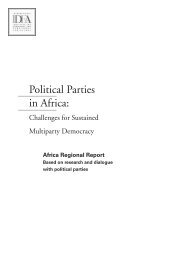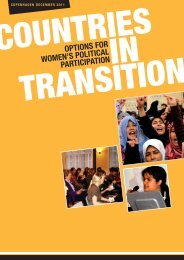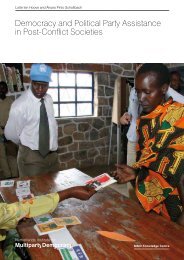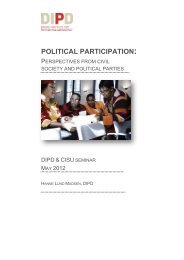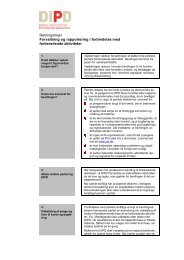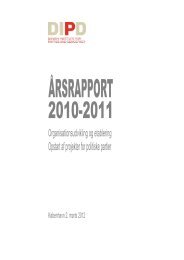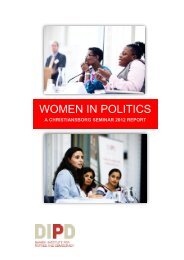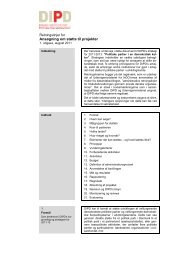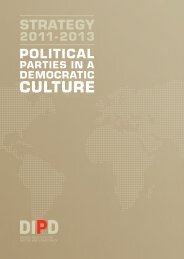Background Document - Danish Institute for Parties and Democracy
Background Document - Danish Institute for Parties and Democracy
Background Document - Danish Institute for Parties and Democracy
Create successful ePaper yourself
Turn your PDF publications into a flip-book with our unique Google optimized e-Paper software.
THE STRUGGLE FOR WOMEN’S REPRESENTATION<br />
Equality be<strong>for</strong>e the law is the original feminist dem<strong>and</strong>, <strong>and</strong> the 1915 amendment to<br />
the Constitutional Act was celebrated with parties, parades, <strong>and</strong> memorials across<br />
Denmark because the recognition of women’s political rights was regarded as the constitutional<br />
establishment of women’s rights. This view was supported by the fact that<br />
the government had changes to remaining gender discriminatory legislation on its to<br />
do list, <strong>and</strong> that those political parties that did not already have equal rights on their<br />
agendas now revised their plat<strong>for</strong>ms to include it.<br />
According to this logic, the women’s movement had accomplished its mission,<br />
<strong>and</strong> many of the extensively ramified movement’s associations dissolved themselves.<br />
Their take on the future was that women should safeguard their interests in the voting<br />
booth, through membership of political parties, <strong>and</strong> in Parliament. However, the<br />
pioneering <strong>Danish</strong> Women’s Society kept up its work.<br />
The first elections were something of a wet blanket to this mood of victory. The<br />
municipal elections of 1909 resulted in a female representation of 1.3 per cent <strong>and</strong> a<br />
gender distribution in municipal politics of 127 women to 9682 men. Women fared<br />
only marginally better in the national elections of 1918. Only 4 of the 140 elected c<strong>and</strong>idates<br />
were women.<br />
Those who put the initial results down to teething troubles were about to be even<br />
more disappointed. As Figure 1 shows, the following elections brought a decline in<br />
women’s representation.<br />
FIGURE 1<br />
Women in the <strong>Danish</strong> Parliament 1918-2011 6<br />
200<br />
150<br />
100<br />
50<br />
0<br />
1920<br />
1924<br />
1932<br />
1943<br />
1950<br />
1957<br />
1966<br />
6 Note: In the lower house up until 1953, when the present unicameral system was adopted.<br />
Source: Kvinder i Folketinget http://www.ft.dk/Demokrati/~/media/Pdf_materiale/Pdf_publikationer/In<strong>for</strong>mationsark/Folketingets_medlemmer/kvinder_i_folketinget%20pdf.ashx<br />
WOMEN IN POLITICS DANISH INSTITUTE FOR PARTIES AND DEMOCRACY PAGE 51<br />
1973<br />
1979<br />
1987<br />
1994<br />
No. of MPs<br />
No. of female MPs<br />
2005<br />
2015



